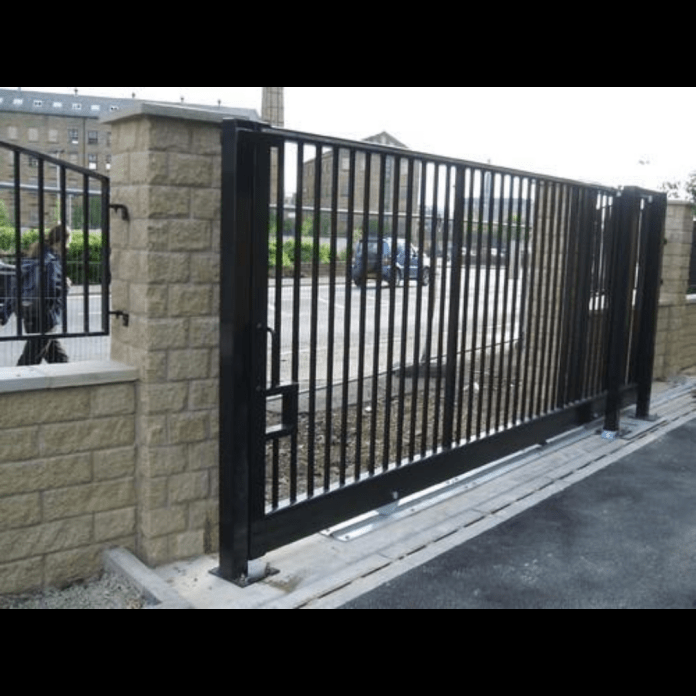Data centers are valuable assets that require robust security measures to protect personnel, assets, and sensitive information.
In this guide, we will explore the importance of security fencing and steel gates as effective solutions to enhance the safety and security of data-centers. We will delve into the various types of security fencing available, the advantages of steel gates, and important considerations to keep in mind when implementing these security measures.
By the end of this guide, you will clearly understand how to create a secure environment that instils confidence and protects your data-centre from potential threats.
Understanding Security Fencing
Security fencing acts as the first line of defence for any data-centre. It serves as a physical barrier, demarcating the boundaries and deterring unauthorised access. Here are some key points to consider when selecting security fencing:
-
Material: Opt for high-quality materials such as steel, which offer durability, strength, and resistance to tampering.
-
Height and Visibility: Choose a fence height that provides adequate security without obstructing visibility. It should be difficult to climb over and tall enough to discourage intruders.
-
Anti-Climb Features: Incorporate anti-climb features such as sharp-topped fence panels, vertical spikes, or curved extensions to discourage unauthorised entry.
-
Perimeter Protection: Consider integrating additional security features like perimeter intrusion detection systems, CCTV cameras, and access control systems to enhance overall security.
-
Environmental Adaptability: When selecting security fencing, consider the environment in which the data-centre is located. If the area experiences strong winds, extreme temperatures, or corrosive conditions, choose fencing materials that are resistant to such factors. For example, galvanised steel fencing is highly resistant to rust and corrosion, making it suitable for coastal areas or regions with high humidity.
Types of Security Fencing
There are various types of security fencing suitable for data-centres, each with unique features and benefits. Here are some commonly used options:
-
Chain Link Fencing: This cost-effective option provides a basic level of security. It is durable, easily customisable, and offers good visibility.
-
Welded Mesh Fencing: Constructed from welded steel wires, this fencing provides excellent strength and rigidity, making it difficult to cut through. It offers better security than chain link fencing.
-
Palisade Fencing: Known for its formidable appearance, palisade fencing is a popular choice for data-centres. With sharp-topped metal panels, it acts as a strong deterrent against intrusion.
-
Mesh Panel Fencing:This type of fencing combines the durability of welded mesh with an aesthetically pleasing appearance. It offers enhanced security and is available in various colours and designs.
Advantages of Steel Gates
Steel gates are crucial components of a secure data-centre. They provide controlled access, ensure restricted entry, and enhance the overall effectiveness of security systems. Consider the following advantages when selecting steel gates:
-
Durability and Strength: Steel gates are highly durable, offering long-lasting security. They can withstand harsh weather conditions and resist tampering or forced entry.
-
Customisation Options: Steel gates can be tailored to match the architectural style of the data-centre while maintaining security requirements. They can be designed with various features to enhance aesthetics or co-ordinate with branding requirements.
-
Access Control Integration: Steel gates seamlessly integrate with access control systems, enabling authorised personnel to enter and exit the premises efficiently. This allows for better monitoring and enhances overall security management.
-
Visual Deterrence: Steel gates act as a visual deterrent to potential intruders, clearly indicating that the premises are protected and monitored.
-
Automation and Remote Control: One of the significant advantages of steel gates is the option for automation and remote control. By incorporating motorised mechanisms, steel gates can be easily opened and closed remotely, providing convenience and minimising the need for manual operation.
Other Important Considerations
When implementing security fencing and steel gates, there are a few crucial considerations to ensure maximum effectiveness:
-
Security Assessment: Conduct a thorough security assessment of the data-centre to identify vulnerable areas, potential risks, and required security measures.
-
Regulations and Permits: Familiarise yourself with local regulations and obtain necessary permits before installing security fencing and gates.
-
Maintenance and Inspections: Regularly inspect and maintain security fencing and gates to address any wear and tear promptly. This ensures continued effectiveness and longevity.
-
Integration with Other Security Systems: Integrate security fencing and steel gates with security measures like CCTV cameras, alarm systems, and access control systems for a comprehensive security solution.
Summing Up
Investing in security fencing and steel gates is crucial to safeguarding your data-centre from unauthorised access and potential threats. By understanding the types of security fencing available, the advantages of steel gates, and important considerations during implementation, you can create a secure environment that instils confidence in your employees and stakeholders. Remember to conduct a thorough security assessment, select high-quality materials, and integrate your security measures to establish a robust security system that protects your data-centre effectively.
